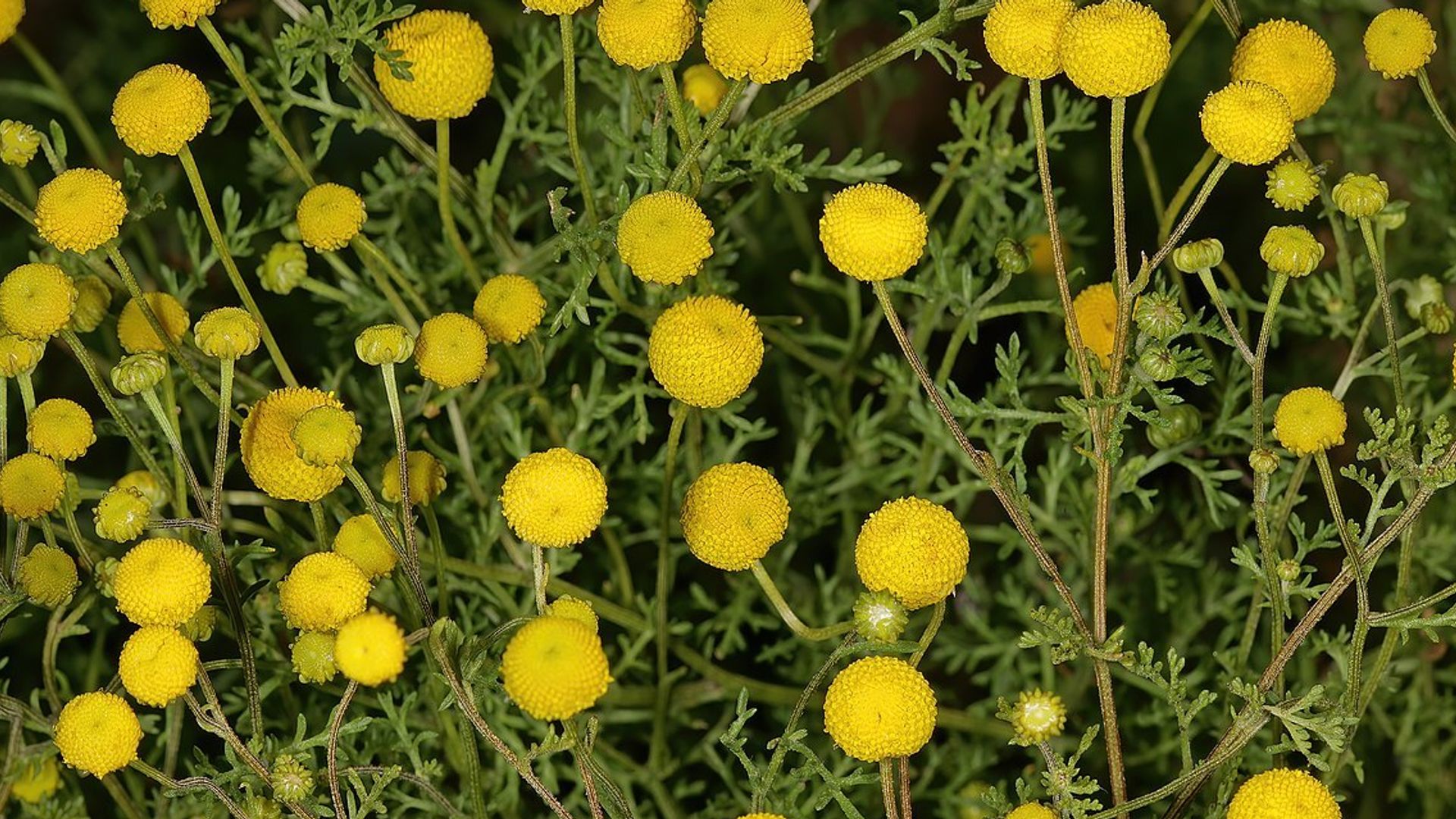
KARAH RUCKER: A SEA OF YELLOW IS WASHING OVER LARGE PORTIONS OF THE U-S SOUTHWEST. THESE BEAUTIFUL YELLOW BLOOMS BEGAN CARPETING PORTIONS OF CALIFORNIA AND ARIZONA AFTER HEAVY STORMS THIS WINTER.
PRETTY – BUT ALSO PROBLEMATIC. THESE FLOWERS BELONG TO A NOXIOUS WEED CALLED ‘STINKNET’. IT’S FAST SPREADING, CHOKES NATIVE PLANTS, AND ABOVE ALL IS A MASSIVE FIRE DANGER.
SHAWN GILLELAND | RURAL METRO FIRE PIO, CENTRAL ARIZONA: “It’s just like, like a kindling carpet out there.”
SHAWN GILLELAND IS THE PUBLIC INFORMATION OFFICER WITH RURAL METRO FIRE DEPARTMENT IN CENTRAL ARIZONA.
GILLELAND: “It is probably the most prevalent danger. There’s also the side effect of causing a lot of irritation, and the allergies, people with allergies and asthma, stuff like that. But, as we’re coming into fire season, particularly, it poses a great threat because it’s a pre-emergent weed that comes out in late winter. So now as we enter the summer season, and temperatures start to rise, especially here in Arizona, and across the Southwest, all that stuff starts to die off. And because of its invasive growth, it’s everywhere. And so now you have a whole new source of fire fuel across the desert floor.”
STINKNET IS NOT NATIVE TO THE U-S. IT WAS FIRST FOUND IN SOUTHERN CALIFORNIA IN 1981- POSSIBLY CARRIED OVER FROM SOUTH AFRICA OR AUSTRALIA. IT WAS DETECTED IN THE PHOENIX AREA IN 1997.
MICHAEL CHAMBERLAND | AGENT IN URBAN CULTURE FOR UNIVERSITY OF ARIZONA: “It moves along road corridors, we think that it can be picked up on vehicles, or just on people’s clothing as they get in and out of vehicles. So it’s very likely that our plants got here from Southern California from the infestation there. We find that in Phoenix, it’s actually spreading and being more of an issue than it has been in Southern California.”
MICHAEL CHAMBERLAND IS AN AGENT IN URBAN CULTURE FOR THE UNIVERSITY OF ARIZONA, MARICOPA COUNTY COOPERATIVE EXTENSION.
CHAMBERLAND: “By the time people really started realizing how serious it was, it had really overrun a large portion of the Phoenix area. It was first in the city and in the residential areas. But now we see it moving out into parks and natural areas and deserts around the city. And unfortunately, it’s also moving to other parts of Arizona too.”
CHRIS MCDONALD | NATURAL RESOURCE ADVISER, UNIVERSITY OF CALIFORNIA: “One of the things that’s concerning about stinknet is that it has such a broad habitat, it can invade a wide variety of habitats. So yeah, it can grow near the coast, it can grow in the mountain foothills, it can grow in valleys that are filled with grasslands. It can grow in disturbed areas, it can grow in natural wildland type areas like your national parks or national forests.”
CHRIS MCDONALD IS A NATURAL RESOURCE ADVISER WITH THE UNIVERSITY OF CALIFORNIA COOPERATIVE EXTENSIONS. HE SPECIALIZES IN MANAGING INVASIVE PLANTS.
MCDONALD: “It was being monitored locally. And there were land managers who were trying to stop it. We call this early detection, rapid response, like once something, you try and find a new piece of species quickly, and then you rapidly respond to it by trying to control it. And that idea wasn’t necessarily as strong and prevalent as it is now. So back when it was here in the 80s, and 90s, people noticed it, they tried, but there wasn’t kind of a large scale effort with, you know, funding to try and help them eradicate it before it spreads further. And on top of that, there was not a lot of research in North America, if any at all on this plant.”
STINKNET GERMINATES AROUND OCTOBER. AS SOON AS IT BEGINS SPROUTING GREEN LEAVES, IT GIVES OFF A NOXIOUS ODOR – MUCH LIKE TURPENTINE. HENCE ITS NAME. IN WINTER, IT BLOOMS INTO BEAUTIFUL YELLOW ORBS THAT CONTAIN HUNDREDS OF SEED. ONCE THE PLANTS DRY OUT AT THE BEGINNING OF SUMMER, THEY BECOME A TICKING TIME BOMB.
GILLELAND: “The unfortunate thing is we’re getting early monsoon type activity. So dry lightning or lightning with just a very minimal amount of water or rain associated with it. So that becomes again, another hazard that we’ll be facing.”
BETTY JANIK | SCOTTSDALE CITY COUNCILWOMAN: “There are several organizations starting at the federal level, the state level, the county level, and the city level, to deal with problems with invasive fire type plants that can cause the spread of forest fires.”
SCOTTSDALE CITY COUNCILWOMAN BETTY JANIK SAYS THE STATE IS THROWING MONEY AT THE INVASIVE WEED SWALLOWING THE SONORAN DESERT.
JANIK: “In the past year and a half, we’ve gotten $350,000 for the Forestry and Fire Management invasive plant program. And then we also got another $192,000, just in January to get rid of invasive plants.”
BUT JANIK SAYS GETTING RID OF THE PLANTS MIGHT COME DOWN TO USING HARSH CHEMICALS. SOMETHING SHE KNOWS HER CONSTITUENTS WON’T BE HAPPY ABOUT.
JANIK: “I know they will be upset. I know they will be upset because we have a very, very active community in Scottsdale. And we’ve already
had some criticism for using herbicides./ And we’ve had quite a few complaints about the use of Roundup, asking us if we can find another way to do it. And the other problem / they will destroy any plants that come in contact with the herbicide etc. So, it is a problem. It is a problem.”
A PROBLEM THAT NEEDS TO BE ADDRESSED – BEFORE SPREADING TO MORE PARTS OF THE U-S.










